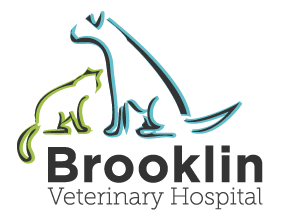Library
-
A fecal Baermann is a special fecal test used to diagnose infection by parasites that pass larvae in stool instead of eggs. A small golf-ball sized sample of fresh stool is mixed with warm water to encourage larvae to separate from the fecal material to allow identification. The most common parasite diagnosed with a fecal Baermann is lungworm, which typically causes signs of coughing.
-
Dog food has been made so palatable that it can easily create gluttonous behavior. Meal feeding and portion control are important to prevent obesity. Owners should not give in to begging behavior. Dogs that are still hungry after their meal can be supplemented with snacks such as green vegetables recommended by your veterinarian. Dogs that eat too quickly can be fed creatively to slow down eating.
-
Ferrets are carnivores and cannot handle a diet containing more than 4% fiber. A good quality ferret diet should contain 32-40% protein and 10-15% fat. There are several good commercial dry foods for ferrets.
-
All snakes are carnivores. Some eat warm-blooded prey (rodents, rabbits, birds), while others eat insects, amphibians, eggs, other reptiles, fish, earthworms, or slugs. Live prey should not be fed to snakes. Snakes can be offered thawed, previously frozen prey, or freshly killed prey. Smaller or younger snakes usually eat twice each week, while larger, more mature snakes typically eat once every week or two.
-
This handout discusses the need for ensuring your pregnant cat is receiving adequate nutrition to make sure both she and her kittens thrive during this time of increased demands on her body. Feeding and diet suggestions are provided.
-
This handout discusses the need for ensuring your pregnant dog is receiving adequate nutrition to make sure both she and her puppies thrive during this time of increased demands on her body. Feeding and diet suggestions are provided.
-
With all cancer management strategies, providing optimal nutrition for your cat is essential. The metabolic effects of cancer will persist after treatment but with your veterinarian’s guidance, you can adjust your cat's nutrient profile and potentially avoid some of these negative side effects. Carbohydrates promote cancer cell growth, while cancer cells have a difficult time using fat as an energy source, so foods that are relatively high in fat and low in carbohydrate may benefit cats with cancer. The effects of surgery, chemotherapy, and radiation therapy will be considered when your veterinarian advises a nutrient profile, formulation, quantity, and delivery method for your cat.
-
With all cancer management strategies, providing optimal nutrition for your dog is essential. The metabolic effects of cancer will persist after treatment but with your veterinarian’s guidance, you can adjust your dog’s nutrient profile and potentially avoid some of these negative side effects. Carbohydrates promote cancer cell growth, while cancer cells have a difficult time using fat as an energy source, so foods that are relatively high in fat and low in carbohydrate may benefit dogs with cancer. The effects of surgery, chemotherapy, and radiation therapy will be considered when your veterinarian advises a nutrient profile, formulation, quantity, and delivery method for your dog.
-
Once your cat has reached adulthood, their nutrient profile will change from when they were a kitten. Your veterinarian can help you determine what proportion of each nutrient is needed based on your cat's lifestyle and current body condition. It is important to lay a good nutritional foundation to maximize the health and longevity for your cat and reduce the potential for developing obesity.
-
Once your dog reaches adulthood, his nutrient profile changes from when he was a puppy. Your veterinarian can help you determine what proportion of each nutrient is needed based on your dog’s lifestyle and current body condition. Avoid free-feeding and work on a meal schedule. Following these steps can help your dog lead a healthier life and avoid becoming overweight or obese.



